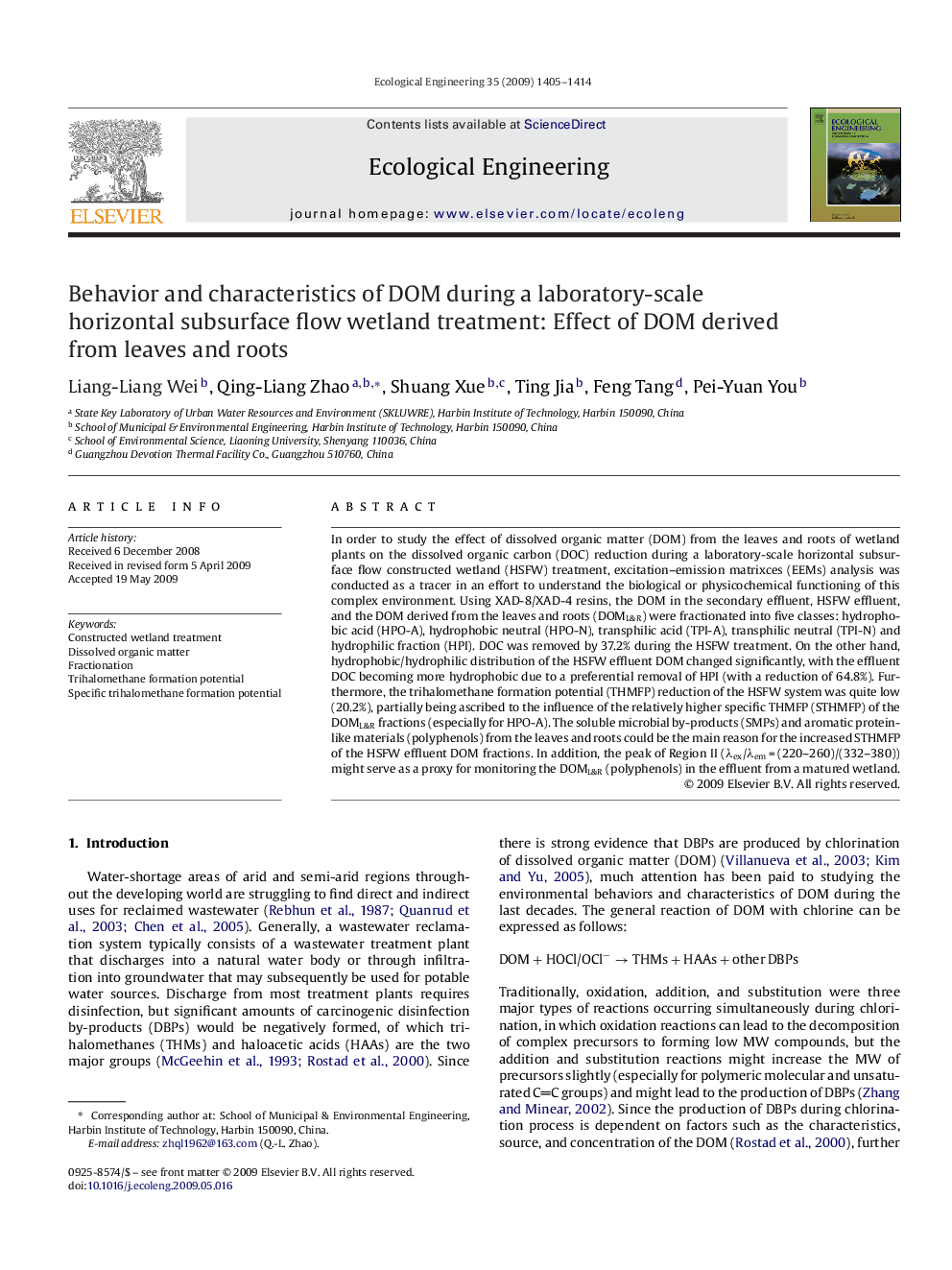| Article ID | Journal | Published Year | Pages | File Type |
|---|---|---|---|---|
| 4390717 | Ecological Engineering | 2009 | 10 Pages |
In order to study the effect of dissolved organic matter (DOM) from the leaves and roots of wetland plants on the dissolved organic carbon (DOC) reduction during a laboratory-scale horizontal subsurface flow constructed wetland (HSFW) treatment, excitation–emission matrixces (EEMs) analysis was conducted as a tracer in an effort to understand the biological or physicochemical functioning of this complex environment. Using XAD-8/XAD-4 resins, the DOM in the secondary effluent, HSFW effluent, and the DOM derived from the leaves and roots (DOML&R) were fractionated into five classes: hydrophobic acid (HPO-A), hydrophobic neutral (HPO-N), transphilic acid (TPI-A), transphilic neutral (TPI-N) and hydrophilic fraction (HPI). DOC was removed by 37.2% during the HSFW treatment. On the other hand, hydrophobic/hydrophilic distribution of the HSFW effluent DOM changed significantly, with the effluent DOC becoming more hydrophobic due to a preferential removal of HPI (with a reduction of 64.8%). Furthermore, the trihalomethane formation potential (THMFP) reduction of the HSFW system was quite low (20.2%), partially being ascribed to the influence of the relatively higher specific THMFP (STHMFP) of the DOML&R fractions (especially for HPO-A). The soluble microbial by-products (SMPs) and aromatic protein-like materials (polyphenols) from the leaves and roots could be the main reason for the increased STHMFP of the HSFW effluent DOM fractions. In addition, the peak of Region II (λex/λem = (220–260)/(332–380)) might serve as a proxy for monitoring the DOML&R (polyphenols) in the effluent from a matured wetland.
